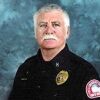Freshly washed trucks and newly dried bunker gear poised for the next call. For now, the station is clean and the paperwork is done. In the neighboring county, volunteers gather around the table for weekend morning coffee.
In both stations there is the smell of fresh coffee and talk of family, friends, finances … and football. And with college and professional football playoffs upon us that talk is in full swing.
From the first end zone dance of a Pop Warner kid to the smooth moves of an interception in the SEC, from hardship to victory, from playground to coliseum — football players have the gift of speed, grace and power. As firefighters, we aspire to the same.
Like the salutation of the Romans, “strength and honor,” both football and firefighting have embraced the mission statement “integrity through strength.” This makes for a truly inspired firehouse discussion.
OK, so there are conditions that call upon all of us to commit, sacrifice and resolve — score a touchdown, extinguish the fire, make a first down, breech that door. But can firefighting really be compared to football?
Teamwork
While firefighting is certainly not a game, both pursuits generate many of the same results — respect for achievement, adrenaline-fused situations and at the top of the list, an understanding and appreciation of teamwork above individual accolades.
From the fireground to the crash scene and from the forest to our cities, first responders carry the ball — together. This is the strength of purpose we all feel and like football, there is an appreciation by all who are witness to such a collective strength.
Firefighters know that strength takes work and work takes strength. Like football players, we pride ourselves on physical dexterity and having a wide range of skills.
Conditioning is important and driven by perseverance regardless of the workout or its environment. This is strength of determination. In the training room and on the line, the result is a more effective team.
A heavy rescue squad, a hot-shot crew and all the late-night academy students — all teams determined to be the best. Eventually these hardy groups of battlers morph into a well-oiled machine through the consistent application of skills.
Game strategy
A coordinated fire attack is no more than Xs and Os on a chalkboard and applying the results to the training tower or abandoned building over and over.
On the training ground, field or fire, tactics are drilled and strategies are separated, discussed and studied over practice dummies and plenty of water. There is offense and defense and special squads, with everyone training for more power and duration.
Even a shallow view of both disciplines reflects their shared standards. Firefighters and football players wear uniforms, have special tools and equipment and most importantly, need protective clothing. They wear padding, helmets and face protection, as well as special fabrics, footwear and gloves.
On the sidelines, there is staging and rehab with hydration, medical staff and heated discussions about unfolding events. Crouched in front of the players’ bench, assistant coaches adamantly change tactics while the head coach paces up and down determining effective movements toward the goal. Do we run or pass, use straight stream or fog?
Begins with leadership
There is even a parallel to incident command. Amid all the skill squad substitutions and checking for eight in the box, span of control is seen from the eyes of a quarterback.
Kick-off, third down and field goals feel like entry, RIT and extinguishment. Each division has an assignment designed to move the field strategy forward. Sounds like an action plan if not a screen pass.
Firefighting operations, like playoffs and the Super Bowl, begin with leadership. Coaching football exemplifies this leadership using strategy and tactics, measureable goals and inspired ideas.
Moreover, a good line officer is the quarterback and in command on the field. Battalion chiefs are line coaches, constantly pushing forward. Captains are linebackers and tight ends on both sides of the ball, and fullbacks whenever strategies change. Wide outs, running backs and linemen leaders are lieutenants.
As you spend another holiday on duty, look into the eyes of a wide receiver catching a pass in the end zone. Feel the fatigue and exhilaration of a fourth and one for the winning touchdown.
Relax for one brief moment in front of the TV and remind yourself what it feels like to do the job well and realize how much you are appreciated during this special time of year.
Now sit down to that delicious dinner, knowing full well the probability of an alarm is directly proportional to the quality of the meal at hand.
This article, first published in 2015, has been updated.













